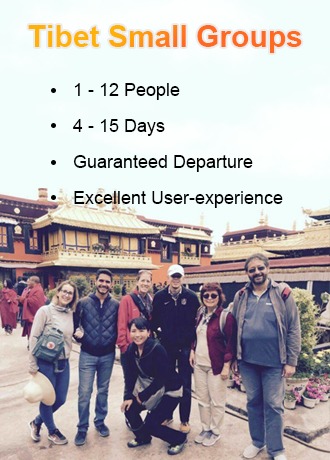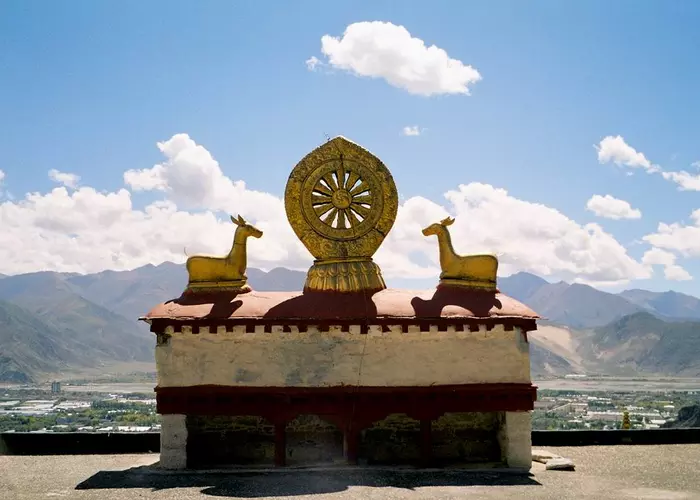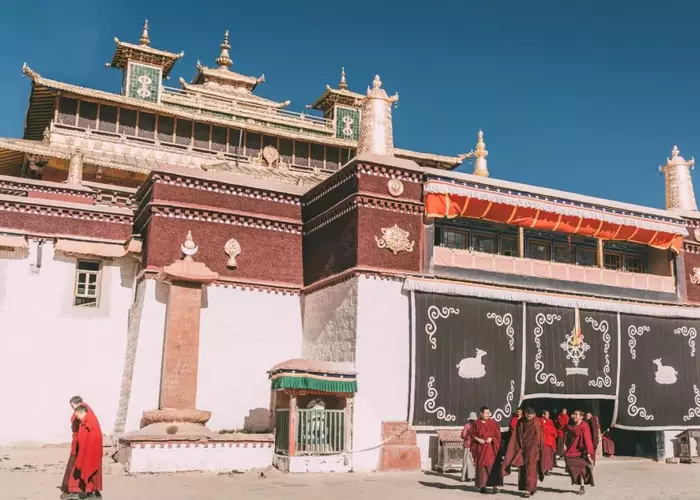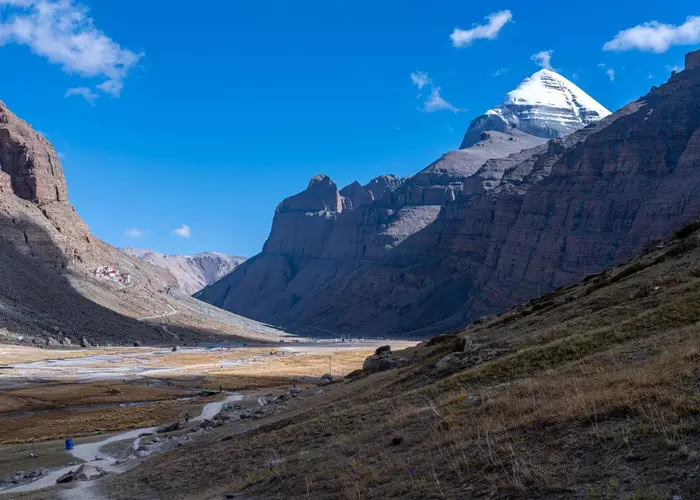Plan Your Mount Kailash Tour from Russia
- Merry
- Last Updated : 10/11/2025
Standing at 6,338 meters, Mount Kailash and the nearby Lake Manasarovar are located in Tibet’s remote Ngari region and are revered as the “Sacred Mountain and Holy Lake.” Together, they form one of the most sacred pilgrimage destinations in Asia. Every year, countless pilgrims travel here to complete the kora (parikrama) ritual, seeking spiritual cleansing, inner purification, or divine blessings. For Russian travelers, reaching this sacred destination requires careful planning — from securing permits and visas to arranging transport and preparing for high altitude. Below is a comprehensive reference guide and suggestions.
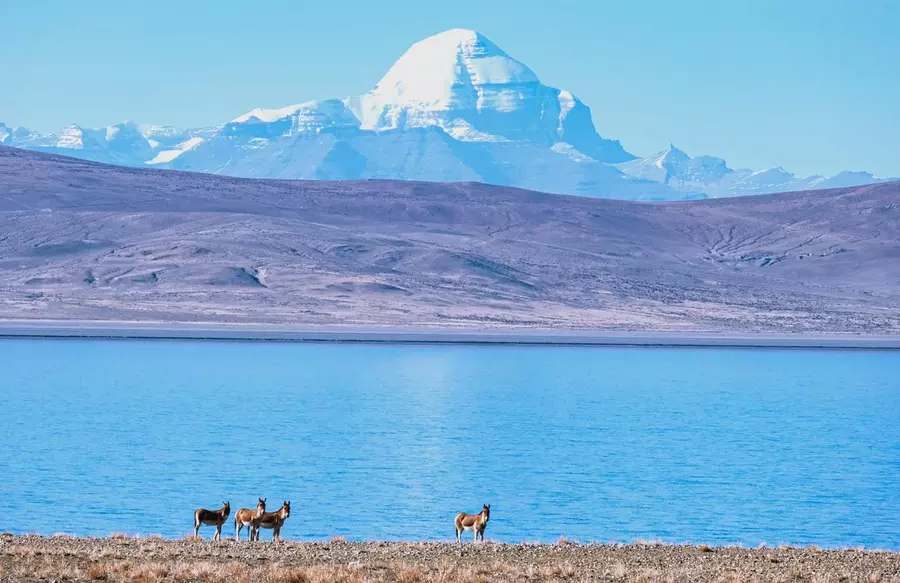
Content Preview
Cultural Background
In Tibetan Buddhism, Hinduism, Jainism, and Bon, Mount Kailash and the nearby Lake Manasarovar are revered as sacred sites symbolizing purity and spiritual awakening. Pilgrims believe that circumambulating Mount Kailash and bathing in Lake Manasarovar can cleanse sins and bring blessings.
In the Kalachakra Tantra tradition, Mount Kailash is also linked to the mythical kingdom of Shambhala, representing enlightenment and harmony. Many Russian explorers and mystics have been fascinated by this idea, viewing Mount Kailash as a gateway to the hidden realm of Shambhala and one of the Earth's powerful energy centers.
Book with a Tibet Travel Agency for Permits
According to the Tibet travel regulations, foreigners are not allowed to travel independently. All trips must be arranged through a licensed Tibetan travel agency. Russian visitors must first book with a local agency, which will handle all necessary permits, including the Tibet Travel Permit, Alien Travel Permit, and Military Permit. To process these documents, agencies require your passport copy, your Tibet travel itinerary, your Chinese visa, and details of your entry city before Tibet.
Select a Travel Route
You can depart for China or Nepal, starting from Lhasa or Kathmandu, to Mount Kailash.
Lhasa to Mount Kailash (Most Popular Route)
This classic route is ideal for first-time visitors from Russia. Lhasa to Kailash covers about 1,500 km one way, which allows gradual acclimatization to high altitude, reducing the risk of altitude sickness. Starting from Lhasa, the holy city, travelers head west via Shigatse, Everest Base Camp, Saga, and Lake Manasarovar before arriving at Darchen—the starting point of the Kailash pilgrimage. After completing the Mount Kailash Kora, you may return to Lhasa or exit Tibet at Gyirong/Zhangmu, then to Kathmandu.
Duration: 12–15 days
√ 15 Days Lhasa Everest Base Camp Kailash Group Tour
√ 12 Days Lhasa Everest Base Camp Kailash Kathmandu Group Tour
Kathmandu to Mount Kailash (Shorter Option)
This route is suitable for those who wish to focus mainly on Mount Kailash. Kathmandu to Kailash covers about 920 km in total, which significantly shortens the overall travel time, allowing you to complete the Kailash journey within a relatively short period. After entering Tibet via Gyirong or Zhangmu from Kathmandu, you need to stay for a day to acclimatize to the altitude. The journey then crosses the magnificent Tibetan Plateau, passing through supply points such as Saga and Zhongba, and offering splendid views of Lake Peiku Tso and Mount Shishapangma. After completing the kora, you can return to Kathmandu via the same route.
Duration: 9–10 days
√ 9 Days Kathmandu Kailash Kathmandu Tour
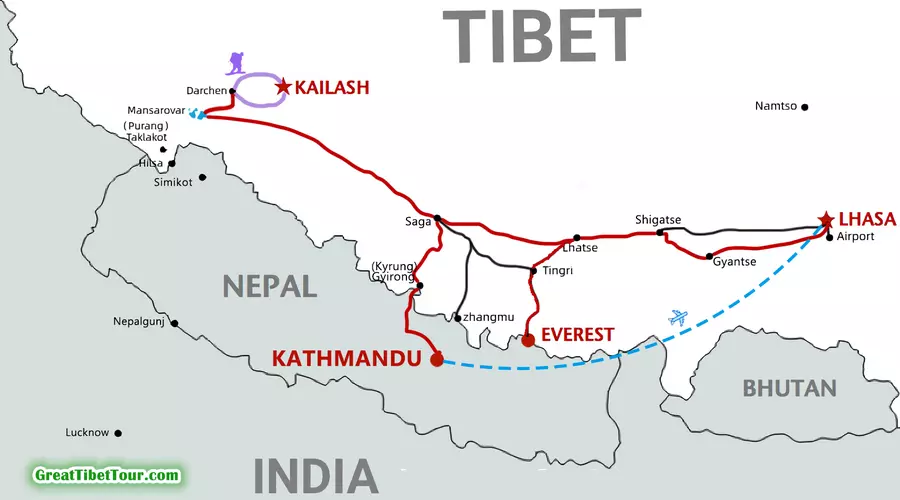
Apply for a Visa
If you enter Tibet from China, you need to apply for a Chinese visa. Whereas, if you enter Tibet from Nepal, a Group China Visa is required.
Note: From September 15, 2025, to September 14, 2026, Russian citizens are granted visa-free entry to China for stays up to 30 days so you don't have to apply for a China visa or a China group visa if your trip lasts within 30 days
Entering Tibet via China
First, complete the online application on the Chinese Ministry of Foreign Affairs website, then schedule an appointment at your nearest Chinese embassy with the required documents (your travel itinerary and invitation letter provided by your travel agency). Please do not mention Tibet in your visa application, as this may lead to rejection. Most Tibet travel agencies are able to provide you with a China travel itinerary without Tibet.
Entering Tibet via Nepal
Upon arrival in Kathmandu, you can apply for a Nepal visa on arrival. You will then need to apply for a Chinese group visa at the Chinese Embassy in Kathmandu, with an invitation letter from the Tibet Tourism Bureau, and a minimum of 4 travelers per group. This process takes at least three working days, so it’s advisable to arrive in Kathmandu a few days in advance.
Choose a Mode of Transportation
At present, there are no direct flights from Russia to Lhasa. You can travel to Lhasa either from China or from Nepal. It is recommended to fly directly to China first and then take a domestic flight or train to Lhasa, which is more convenient and generally more cost-effective.
Depart from Moscow
From Moscow Sheremetyevo International Airport (SVO), you can take a non-stop flight to Beijing Capital International Airport (PEK), Shanghai Pudong International Airport (PVG), Chengdu Shuangliu International Airport (CTU), or Guangzhou Baiyun International Airport (CAN). From these Chinese cities, you can directly fly to Lhasa. If you have sufficient time, spending 1–2 days traveling to Tibet by train along the Qinghai-Tibet Railway offers a unique experience and also helps you better acclimatize to the high altitude.
Depart from St. Petersburg
From Pulkovo Airport (LED), you can take non-stop flights to Beijing Capital International Airport or Shanghai Pudong International Airport (PVG).
Depart from Vladivostok
From Vladivostok International Airport (VVO), you can take non-stop flights to Beijing Capital International Airport (PEK) or Shanghai Pudong International Airport (PVG).
Currently, there are no non-stop flights from Russia to Kathmandu. However, if you wish to visit both Nepal and Tibet, you can choose to enter Tibet via Kathmandu. Most routes require a layover in cities such as Dubai, Sharjah, or Abu Dhabi, with a total travel time of at least 12 hours.
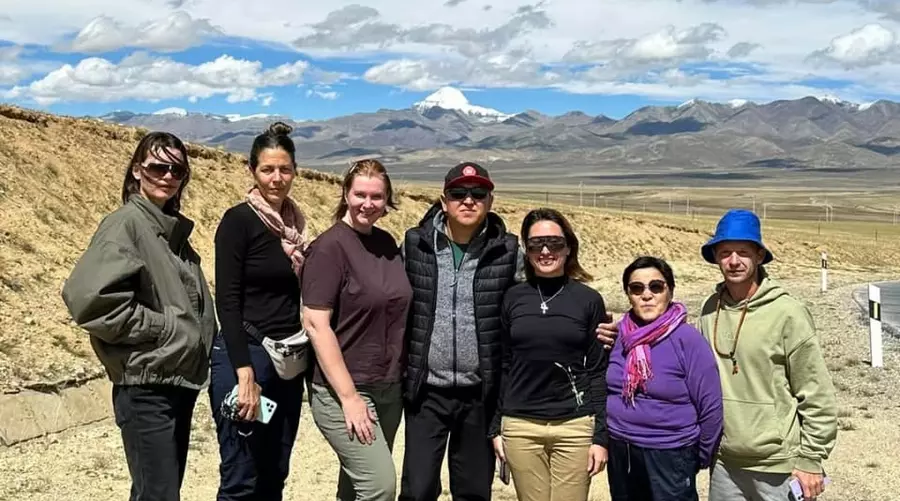
Health and High-Altitude Acclimatization
Acclimatization is crucial for a journey to Mount Kailash. Lhasa sits at an altitude of 3,650 meters, and traveling further to the Ngari region, the altitude rises above 4,500 meters. Common symptoms of altitude sickness include headaches, insomnia, and shortness of breath. It is recommended to stay in Lhasa for 2–3 days upon arrival to acclimatize, ensuring adequate rest and hydration. Prepare appropriate high-altitude medications (such as Diamox), portable oxygen, and avoid strenuous exercise. Warm clothing is essential, as temperatures vary greatly between day and night, so take precautions against cold and sun exposure. Pacing yourself and progressing gradually can significantly reduce the risk of altitude sickness, making the journey safer and smoother. It is also advisable to purchase international travel insurance that covers medical care and emergency evacuation in high-altitude areas to ensure a safe and worry-free trip.
Physical Fitness and Trekking Details
The full Parikrama around Mount Kailash is approximately 52 kilometers and usually takes three days to complete. On the first day, the route from Darchen to Dirapuk Monastery is relatively gentle. The second day involves crossing the Dolma La Pass at 5,630 meters, the most challenging section of the journey. The third day is mostly downhill and comparatively easier.
It is recommended to engage in aerobic exercises and hiking training in advance to strengthen cardiovascular fitness and endurance, helping you cope with the high altitude and long hours of walking. Pilgrims generally circumambulate clockwise (Buddhists and Hindus), while Bon practitioners go counterclockwise; it is important to follow and respect local traditions.
During the Parikrama, maintain quietness and reverence, and avoid climbing peaks or touching sacred stone piles. Prepare trekking poles, waterproof hiking boots, warm clothing, and high-energy snacks to reduce physical strain and ensure a smooth and fulfilling journey.
Estimated Costs
The following is a budget estimate based on different travel options for your reference. The final cost may vary depending on travel dates, flight choices, hotel standards, and any customized services.
1. Group Tours (Budget-Friendly Option)
For solo travelers or those on a tight budget, joining a small group tour is the most economical and convenient choice.
Starting price in the off-season: 174,298 RUB per person.
A reasonable budget tour covering tour fee, round-trip airfare from Moscow, meals, visa, and other necessary expenses: approximately 349,042 RUB per person.
2. Private Customized Tours (Overland Travel)
If you are traveling with family or friends or prefer a more flexible and comfortable experience, a private customized tour is an excellent choice. You can start from Lhasa or Kathmandu.
A standard private customized tour covering tour fee, round-trip airfare from Moscow, meals, visa, and other necessary expenses: approximately from 501,343 RUB per person (based on double occupancy).
3. Additional Services During the Pilgrimage
During the Parikrama of Mount Kailash, optional support services can make the trek much easier:
- 3-day trekking with a horse and horse guide: approximately 35,940 RUB
- 3-day trekking porter service: approximately 12,500 RUB
- 3-day trekking with yak and yak herder: approximately 25,067 RUB
Best Time to Visit Mount Kailash
Overall, the best time to visit Mount Kailash is from May to October. During this period, the weather is stable and mild, making it ideal for trekking and pilgrimage.
- May to June (Spring): Pleasant climate, fresh air, and excellent visibility.
- July to August (Summer): Lush scenery and sufficient oxygen. Although there is more rainfall, it mostly occurs at night and rarely affects travel plans.
- September to October (Autumn): This is the peak season for trekking and photography, with dry, clear weather and deep blue skies.
Travel Tips
Along the journey to Mount Kailash, accommodations are mostly simple guesthouses or Tibetan-style lodges, usually with shared rooms and limited facilities. It is recommended to bring your own sleeping bag and personal toiletries. Meals mainly consist of Sichuan and Tibetan cuisine, with limited availability of fresh vegetables at high altitudes, so bringing high-energy snacks such as chocolate and nuts is advisable to replenish strength.
For payments, UnionPay cards and mobile payment options are available in Lhasa and Shigatse, but in remote towns and villages, cash is still the main method of payment—make sure to carry sufficient small-denomination RMB.
Plan Your Kailash Journey with Us
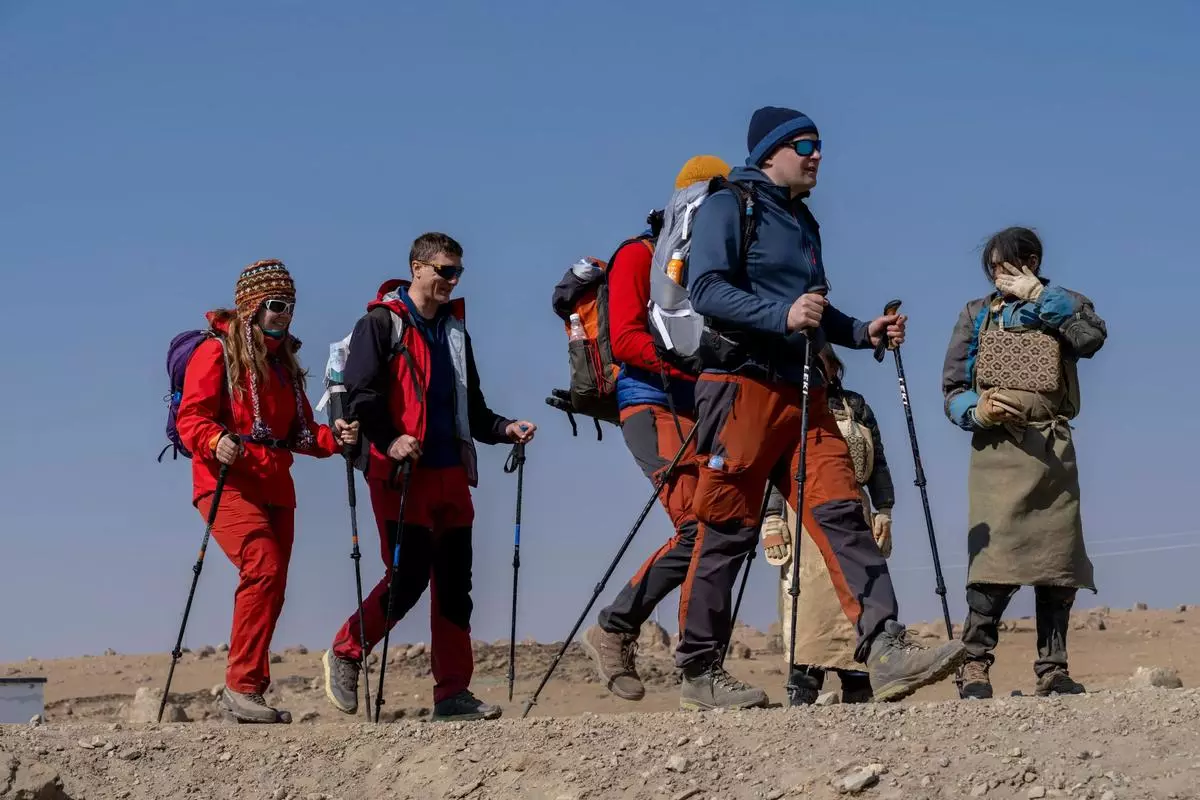
As a Tibet-based travel agency recommended by Lonely Planet, Great Tibet Tour provides expert guidance to help you complete your journey from Russia to Mount Kailash and Lake Manasarovar safely. Our travel consultants can design a customized itinerary and activities based on your needs, ensuring a worry-free trip. Contact us to start planning your pilgrimage!
Email response within 0.5~24 hours.


